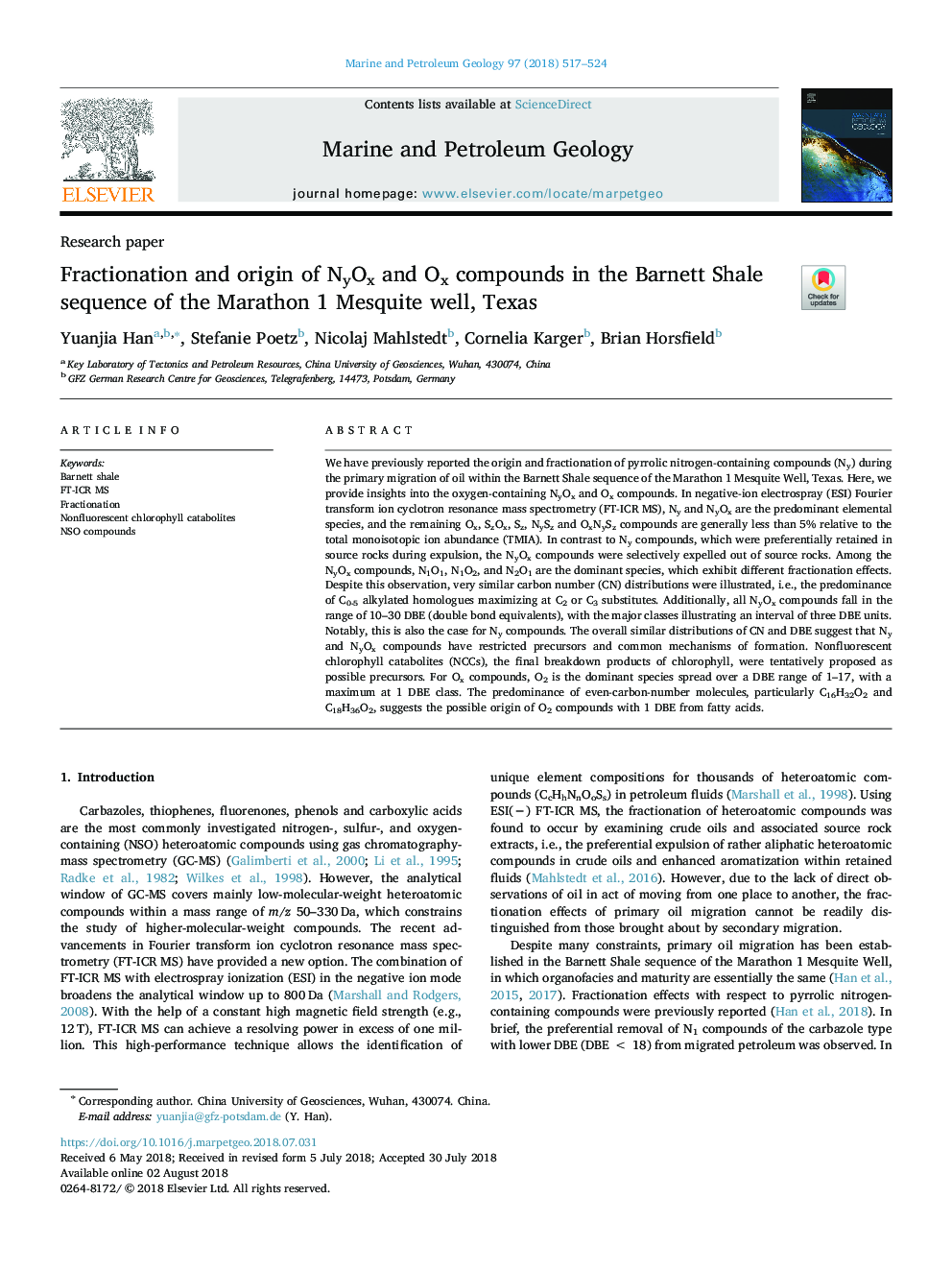| کد مقاله | کد نشریه | سال انتشار | مقاله انگلیسی | نسخه تمام متن |
|---|---|---|---|---|
| 8908993 | 1637128 | 2018 | 8 صفحه PDF | دانلود رایگان |
عنوان انگلیسی مقاله ISI
Fractionation and origin of NyOx and Ox compounds in the Barnett Shale sequence of the Marathon 1 Mesquite well, Texas
دانلود مقاله + سفارش ترجمه
دانلود مقاله ISI انگلیسی
رایگان برای ایرانیان
موضوعات مرتبط
مهندسی و علوم پایه
علوم زمین و سیارات
زمین شناسی اقتصادی
پیش نمایش صفحه اول مقاله

چکیده انگلیسی
We have previously reported the origin and fractionation of pyrrolic nitrogen-containing compounds (Ny) during the primary migration of oil within the Barnett Shale sequence of the Marathon 1 Mesquite Well, Texas. Here, we provide insights into the oxygen-containing NyOx and Ox compounds. In negative-ion electrospray (ESI) Fourier transform ion cyclotron resonance mass spectrometry (FT-ICR MS), Ny and NyOx are the predominant elemental species, and the remaining Ox, SzOx, Sz, NySz and OxNySz compounds are generally less than 5% relative to the total monoisotopic ion abundance (TMIA). In contrast to Ny compounds, which were preferentially retained in source rocks during expulsion, the NyOx compounds were selectively expelled out of source rocks. Among the NyOx compounds, N1O1, N1O2, and N2O1 are the dominant species, which exhibit different fractionation effects. Despite this observation, very similar carbon number (CN) distributions were illustrated, i.e., the predominance of C0-5 alkylated homologues maximizing at C2 or C3 substitutes. Additionally, all NyOx compounds fall in the range of 10-30 DBE (double bond equivalents), with the major classes illustrating an interval of three DBE units. Notably, this is also the case for Ny compounds. The overall similar distributions of CN and DBE suggest that Ny and NyOx compounds have restricted precursors and common mechanisms of formation. Nonfluorescent chlorophyll catabolites (NCCs), the final breakdown products of chlorophyll, were tentatively proposed as possible precursors. For Ox compounds, O2 is the dominant species spread over a DBE range of 1-17, with a maximum at 1 DBE class. The predominance of even-carbon-number molecules, particularly C16H32O2 and C18H36O2, suggests the possible origin of O2 compounds with 1 DBE from fatty acids.
ناشر
Database: Elsevier - ScienceDirect (ساینس دایرکت)
Journal: Marine and Petroleum Geology - Volume 97, November 2018, Pages 517-524
Journal: Marine and Petroleum Geology - Volume 97, November 2018, Pages 517-524
نویسندگان
Yuanjia Han, Stefanie Poetz, Nicolaj Mahlstedt, Cornelia Karger, Brian Horsfield,